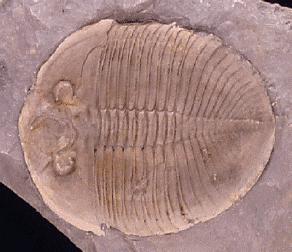- We continued the Geologic Time Line project.
What was collected?
- Nothing.
What was assigned?
- Bring textbook on Monday.
- Geologic Time Line is due Monday.
- Chapter 6 Test is Tuesday.
Daily Science Fact
 Click on this image to view an enlarged version!
Click on this image to view an enlarged version!Among famous groups of extinct organisms, trilobites probably rank second only to the dinosaurs in fame. Their fossils are instantly recognizable and often strikingly beautiful. In fact, prehistoric people liked them as much as we do. At Arcy-sur-Cure in France, a 15,000-year- old human settlement, one of the artifacts found by archeologists was a trilobite that had been drilled to be worn as an amulet.
Although the last few trilobites went extinct about 245 million years ago, they are one of the best-known and most-studied groups of fossil arthropods.